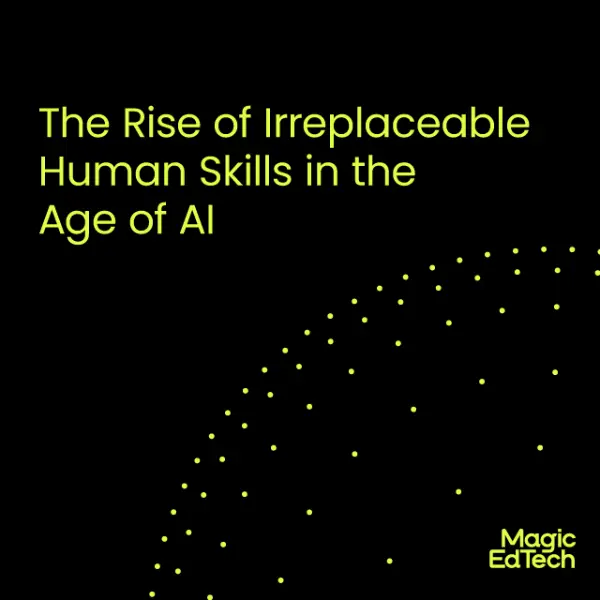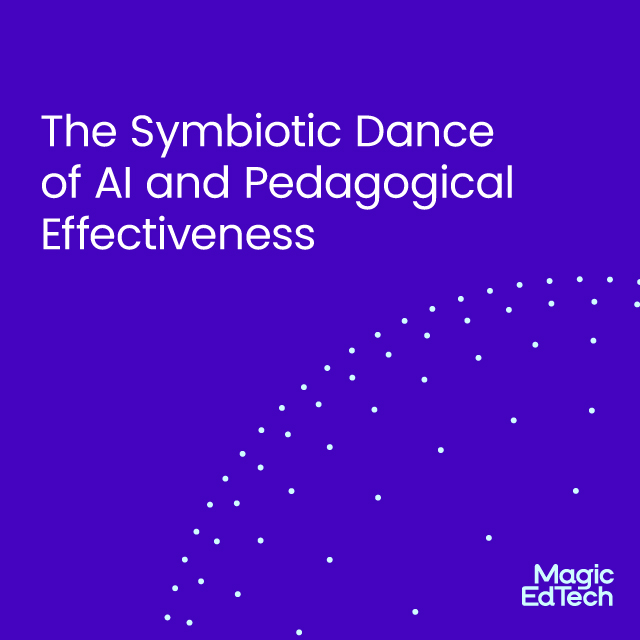Are AI-based Automated Grading Systems the New Teaching Assistants?
- 23 November, 2023
- Reading Time: 6 mins
The 1940s introduced the traditional grading system that was aimed primarily to enhance communication between academic institutions regarding students’ academic readiness. While it seemed like the optimal choice at the time, this system bore its own set of shortcomings. However, as times evolved, the limitations of this once-revered system began to surface. The changing focus of education has made it a necessity to rethink how we grade students, and examine its effectiveness and relevance in modern learning environments.
Teachers have at some point or the other in an academic year faced a huge stack of assignments or assessments awaiting grading. The mere thought of this task can feel tedious, overwhelming, and utterly exhausting. However, despite the considerable effort in grading and providing feedback to students, are students genuinely absorbing the feedback provided, or are they solely fixated on the grade as a measure of teachers’ assessment of their work?
Where Does the Current Grading System Falter?
Are grades an adequate form of feedback? Grading in education has been regarded as a measure of academic success for a long time. However, a closer look at the process reveals a multitude of flaws that make this system problematic. The lack of consistency across schools and even within the same institutions is one major issue. Teachers, even within the same subject and grade level, tend to adopt different approaches to weighing assignments, classwork, quizzes, and assessments. This inconsistency leads to what’s often termed as “grade fog,” where the true meaning and value of a grade become blurred due to the amalgamation of varied assessment criteria within a subject grade.
Biases within the traditional grading methods can extend to evaluating students based on their behavior in the classroom. Incorporating behavior as a component of a grade often restricts the meaning of a successful student. This practice takes away the real factors determining a student’s grades: whether they truly grasp the concepts and possess knowledge or if their grades are affected by limited participation in class activities.
Extrinsic pressures such as parental approval, college admission, scholarships, or future job prospects generate immense stress among students and lead to unhealthy practices like perfectionism, anxiety, or even disengagement from subjects where lower grades are received. The misconception that a low grade means an innate inability to excel in a subject, rather than a temporary setback, often leads students to give up on certain subjects prematurely.
Subjectivity in grading is especially evident in subjects like English, where interpretations and evaluations can significantly vary among teachers. This lack of standardization in grading practices means that a grade given by one teacher might vastly differ from another’s assessment of the same assignment, creating ambiguity over a student’s understanding of a concept.\
The current grading paradigm falls short of showcasing a student’s progress and effort. Thus, failing to accurately measure the depth of knowledge acquired by each student. Consider why we utilize grades beyond a simple pass or fail. Instead, these old habits lean towards a testing-oriented culture, prompting students to focus on what will be evaluated rather than understanding the overall learning material deeply.
Exploring the Possibilities of Automated Grading
Automated grading, also known as computer-assisted grading, involves the use of algorithms to evaluate and score assignments, tests, and other forms of student work. This has gained prominence as an efficient, consistent, and scalable way to assess student performance.
The promise held by automated grading tools is that educators would be able to prioritize personalized interactions, individualized feedback, and meaningful communication with students. They will have more time to invest in guiding students toward improvement rather than merely evaluating their performance. However, automated grading is not without its own limitations.
Challenges and Limitations of Automated Grading
If automated grading is the promised land, why has its adoption within systems and institutions been met with cautious steps rather than leaps? It’s essential to recognize that automated grading, while efficient and consistent, is not without its limitations.
- Subjective Assignments: Essays, projects, open-ended questions, and subjective assessments often demand human judgment to evaluate nuances, tone, and creativity, posing a challenge for automated grading systems.
- Adaptability and Customization: Tailoring automated grading systems to fit diverse curriculums, subjects, and grading rubrics requires considerable customization and fine-tuning, which can be time-consuming.
- Technological Issues: The Grading system might find difficulty in interpreting complex responses, recognizing diverse writing styles, and accurately assessing handwriting, which can lead to unreliable grading of assessments.
- Teacher-Student Interaction: Overreliance on automated grading might diminish the essential teacher-student feedback loop, impacting personalized learning experiences.
- Lack of Trust: Educators and stakeholders may lack confidence in automated systems’ ability to capture the entirety of a student’s work accurately. Concerns about error rates and fairness persist, impacting the trust in these systems.
Can AI and Edtech Integrations Overcome Automated Grading Challenges?
With schools being cautious about adopting automated grading solutions, integrating AI within these and the right combination of edtech solutions presents a great opportunity to mitigate these challenges. With strategic implementation and investment in tailored technological advancements, the limitations of current automated grading systems can be effectively addressed
Enhancing Precision and Subjectivity Handling
Investing in training your private Large Language Models (LLMs) to refine its natural language processing (NLP) capabilities to match your context. Provide past samples of graded papers to help the solution identify creativity and other subtle nuances within written answers. This kind of enhancement augments the accuracy of AI grading systems, ensuring more comprehensive evaluations.
Personalized Feedback and Learning Paths
Generative AI’s ability to provide immediate feedback is already a significant benefit, but it’s poised to become even more personalized. AI systems can tailor feedback and learning paths to address individual needs as they gather data on each student’s strengths and weaknesses. This adaptive approach ensures that students receive the support and resources they require for their unique educational journey.
Ethical Safeguards and Fairness
Edtech developers should prioritize responsible and ethical AI systems. This means training and equipping their LLMs with mechanisms to detect and mitigate biases. Furthermore, they must make provisions for robust security measures to safeguard student data and to build privacy and trust. Collaborating with experts in ethics and data security for AI is crucial in establishing comprehensive ethical frameworks to guide AI-graded assessments.
Integration within Learning Management Systems
Here’s another tip to help edtech companies – edtech integration! Your AI-grading systems must fit seamlessly within existing learning management systems. This streamlines the workflow for educators. The right edtech tools enable educators to create, distribute, and evaluate assessments effortlessly within a familiar platform. The right integration consolidates educational tools, optimizing the teaching and assessment process.
The Role of Educators in Shaping AI-Grading
While edtech offers significant solutions to challenges in automated grading, there remain certain aspects that it may not fully resolve. That’s where the role of educators becomes significant in navigating these unaddressed areas.
A potential solution lies in adopting a hybrid approach that combines AI technology with human oversight. In this model, AI algorithms handle the initial grading, leveraging its efficiency and scalability. However, human instructors step in to review and finalize the assessments, addressing the subjectivity and contextual understanding that AI is still developing. This hybrid methodology effectively combines the strengths of both AI and human judgment, ensuring a more comprehensive and accurate evaluation.
Moreover, educators should play an active role in shaping the trajectory of AI-grading systems. Collaboration between teachers and technology developers is essential to create tools aligned with educational objectives and standards. Continuous dialogue and feedback loops between educators and tech developers will help refine AI systems. Educators can contribute valuable insights into pedagogical needs, ensuring that technology complements rather than replaces their expertise in guiding student learning.
As technology will take on the responsibility of routine grading, educators will pivot their focus toward fostering critical thinking, ethical reasoning, and higher-order skills among students. Their role would evolve around guiding students in comprehending not only correctness but also the implications of their responses, encouraging deeper analysis and reflection within the learning process.
By acknowledging the limitations of AI grading and emphasizing its role as a supportive tool, educators can embrace its potential to enhance their teaching practices while dispelling misconceptions about its impact on job security. The harmony between human insight and technological precision heralds a new era in education—a world where educators leverage AI as a partner, not a replacement, to sculpt minds, nurture curiosity, and foster a thirst for knowledge.
To know more about edtech integrations or enabling your grading systems with responsible and ethical AI, contact our experts today!





